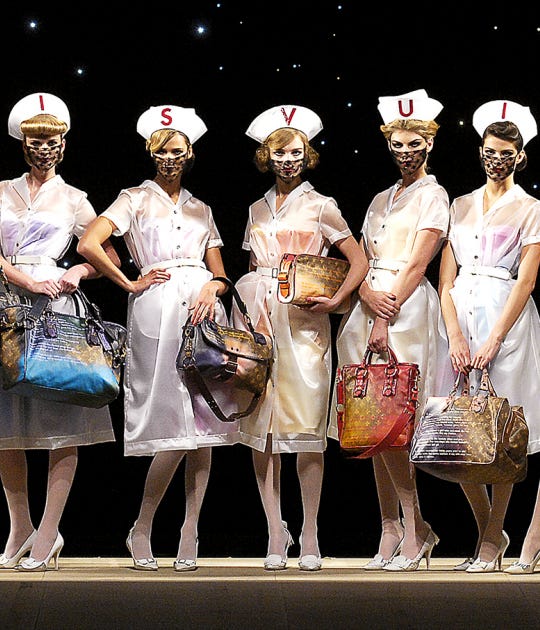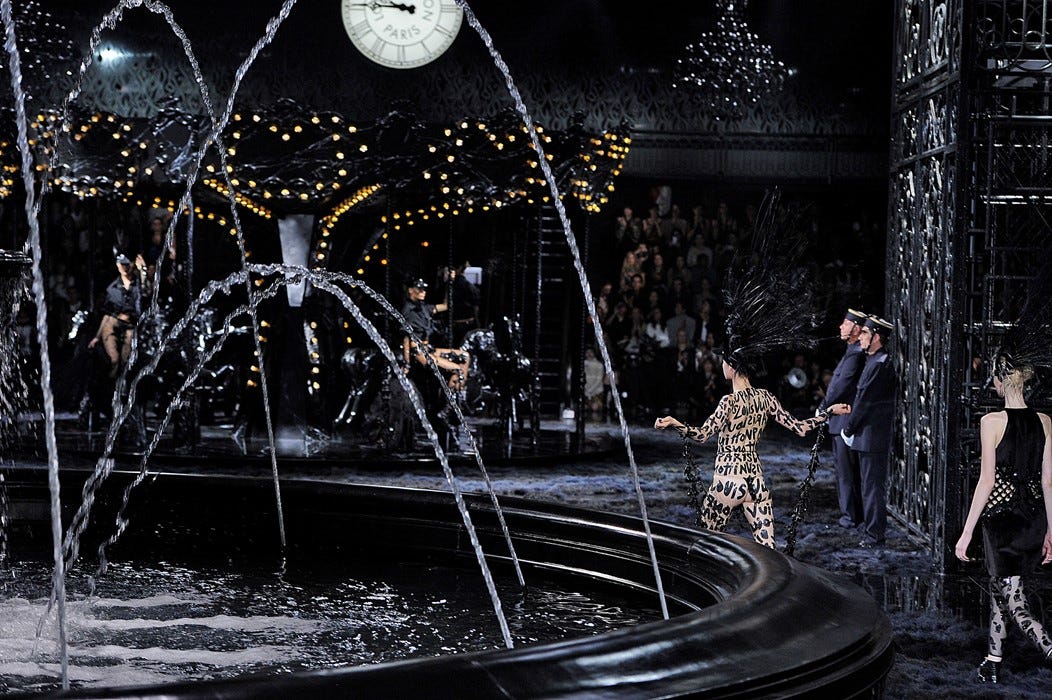Welcome to the Sociology of Business. For those new here, in my last analysis, Pivot to Quality, I considered quality as the competitive strategy, across industries. You can subscribe below, find my book The Business of Aspiration on Amazon and find me on Instagram and Twitter.
When Marc Jacobs joined Louis Vuitton in 1997, he was told that one things that he cannot touch was the logo. Obviously, he changed the logo.
“Anti-snob snobbism” is Jacobs’ 2001 work with Stephen Sprouse. In it, Sprouse and Jacobs translated LV logo into the urban, street, countercultural aesthetic and did not just create something visually new. They launched a new model of the global brand building and turned fashion-art collaborations into the backbone of a brand’s relevance.
Before Marc Jacobs, Louis Vuitton was a luggage and leather goods brand.
When he joined, in 1997, Jacobs created LV’s first women’s ready-to-wear line. In 2004, he launched menswear for the brand, and the line still largely follows Jacobs’ metrosexual-dandy, sporty-elegant, high-tech fabrics blueprint.
Then, there are the collaborations: in addition to Sprouse, Marc Jacobs worked with Jeff Koons, Richard Prince, Yayoi Kusama and Takashi Murakami, among others.
In the process, Jacobs modernized luxury and quadrupled Louis Vuitton’s business. He put forward a vision that’s both downtown and uptown, young, glamorous and gritty.
Before Demna, Marc Jacobs built his collections and seasonal shows around surprise, daring, anti-establishment sentiment, and rule-breaking. Before Thom Browne and JW Anderson’s LOEWE, Jacobs shows had a mischief, a wink, daring, and playfulness. Before Kim Jones’ Dior, Jacobs turned the mundane into extraordinary. Before MSCHF made its name by hijacking corporate logos, Marc Jacobs did it first. Before the 2022/2023 fashion show spectacles, Jacobs was one of fashion’s greater showmen, with shows featuring water fountains, hotel corridors, escalators and a real-life sized LV train. Fittingly, Jacobs’ last collection for Louis Vuitton was dedicated to the “showgirl in all of us.”
Jacobs set a playbook for preserving a brand heritage by repeatedly making it incredibly modern. It’s the playbook that Louis Vuitton has not changed since he left:
The rest of this analysis is for paying subscribers. To access it, please choose one of the paid subscription options below.
Keep reading with a 7-day free trial
Subscribe to The Sociology of Business to keep reading this post and get 7 days of free access to the full post archives.








